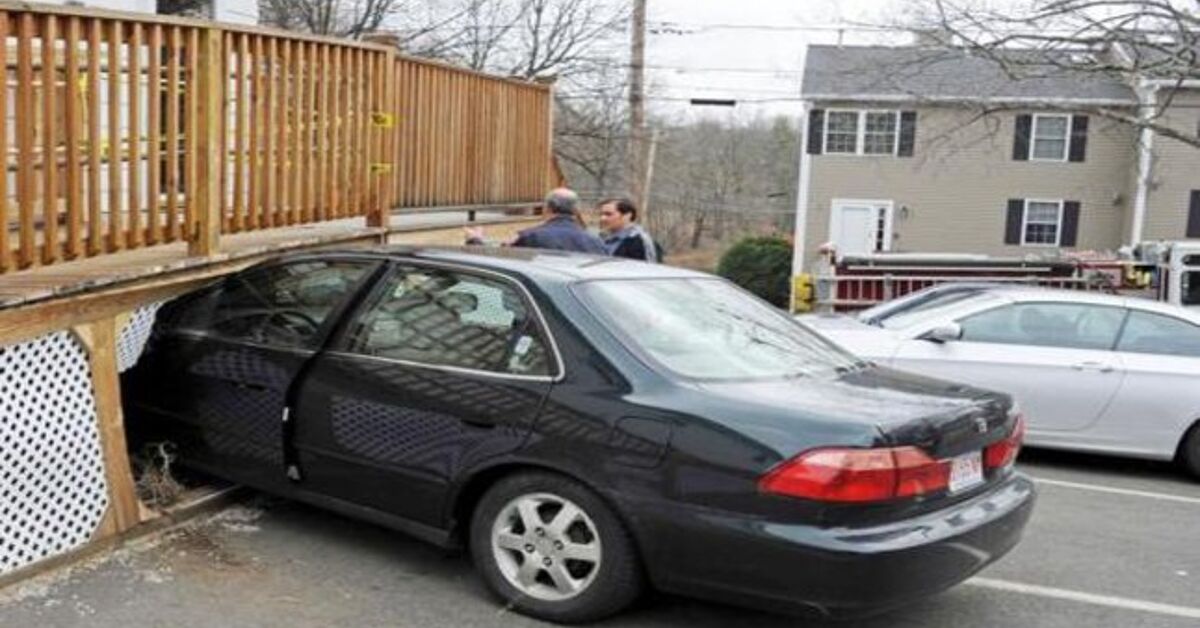@Craig3030: I'm late to this party. But let's take it from the top.
First off: This isn't.. exactly.. your spouse's fault.
It's not just Teslas. Pretty much every car, but mainly cars with automatic transmissions, have had drivers who literally mistook the gas pedal for the brake pedal. This most often happens to the elderly, but it can and does happen to people of every age.
It happens pretty regularly. Every so often there's a death or major accident. In the town that I live in, a gentlemen had that confusion and put his vehicle, at right angles to the road, up over the curb, across the sidewalk (this was downtown), and 3/4 of the way into a local restaurant. Luckily, with no diners in the front tables. The restaurant was closed for months for repair and, yeah, they had insurance. And, no, this wasn't a Tesla - in fact, it occurred before Teslas were on the market. It might have been a Mercedes-Benz.
And, if one thinks about it a bit, one can see why these kinds of accidents are so bad. The car is accelerating, one has muscle memory that one's foot is on the brake, and the without-thought (there's no time!) action is to Stop The Car - which means pressing the brake. Which is actually the accelerator.
Your spouse was convinced, at the time, that her foot was on the brake. And, after the accident, she was recovering from the shock and, probably, wasn't tracking too well as to where her feet actually
were.
Links from a Google Search:
Researchers in Japan have found that older participants have longer reaction times, slower decision times, and greater brain activation in the parts of the brain involved with inhibition and switching tasks. These findings suggest insights into the causes of accidents involving elderly drivers...
www.sciencedaily.com
How can a driver mistake the gas for the brake? I could not rationalize this explanation after reading another news story where a driver in a parking lot had driven into a building with significant force. Surely the driver must have known that this was going to happen and could have prevented it.

www.drivesmartbc.ca
Why do drivers mistake the accelerator pedal for the brake pedal?...

www.everythingzoomer.com
A new study from the National Highway Traffic Safety Administration finds that most car accidents that occur because a driver mistakenly hits the gas pedal instead of the brakes involve older female drivers in parking lots.Apparently, almost two-thirds of drivers involved in this type of...

www.autoguide.com
That last link refers to a study by the NHTSA on the subject. I meant it when I said that these kinds of accidents are hardly uncommon.
Second: There's this thing about runaway cars. Actually, this was an
actual problem with 1990-early 2000's Toyotas.
I happen to be a mixed-signal electronics engineer. It came out that Toyota had misdesigned, then overloaded, and then misprogrammed the engine controllers on the majority of their cars. Including, at the time, my spouse's daily driver, a Sienna, but not my daily driver, a Prius. Actual analysis of Toyota's code by a third-party consultant who was put through #@#^% by the Toyota lawyers got to see the actual code - and then, went out, and recreated a whole buncha crashes, knowing what was wrong with the watchdog timers and what-not.
The Prius happened to have a clean-sheet-of-paper design and wasn't subject the the #!%!# that the Toyota driving computer was; and the Toyota driving computer was doing that because bean counters thought that the cost of building a new, safer computer that wasn't dangerous was too much.
Having said that: The likes of Ford, GM, VW, and numerous other driving computers and associated hardware were brought in for comparison, and, well, there was no comparison. The Toyota stuff was #@%!. As a result of the ensuing class action, a whole buncha people (including my spouse) got something like $500 checks.. and we were happy to ditch the car after a time, since, as far as I know, Toyota never actually fixed the computers.
Another thing. It turned out that, even with an out-of-control Toyota barreling down the freeway (this actually happened, a number of times) it was
theoretically possible to stop the car by slamming on the brakes, hard. The problem was that, humans being humans, humans hit the brakes, slow down a bit, then maybe come off the brakes a bit, lather and rinse a couple of times: And then the brakes get hot and won't stop an ant, never mind an out of control engine.
At the time, Priuses were the Enemy of the Oil Companies, so there was all sorts of FUD that Priuses were subject to this, too. Turned out that they absolutely weren't; but that didn't stop one fraudster who drove around in the Sierra Nevadas with his foot on the gas, floored - and the brakes on as well. Thing is, when the Prius detected, "Brakes On!" it automatically cut the gas, gas pedal position or not, other drivers (and the cops, eventually) got the guys antics on web cams, and, well, his "But my Prius was out of control!" lawsuit died a
very quick death.
So: Nobody has actually had an out-of-control Tesla. Since the car was in an accident, there's likely a hard-to-delete log in the car's internals. A proper civil lawsuit from a judge with subpoena power can get the information from Tesla; and things like pedal position should be visible. If you want to go that route, you'll need a lawyer.





